
Wind farm
Slickly Wind Farm
We have consent to build a wind farm located 8km south west of John O’Groats, near the operational Stroupster wind farm.
The project consists of 11 wind turbines with a maximum tip height of 149.9 metres. We have designed the project carefully, avoiding cumulative effects by ensuring turbine height and proportions work with the existing Stroupster Wind Farm.
An application was submitted to The Highland Council for in December 2019 for 11 turbines with a maximum tip height of 149.9 metres. In March 2021, the project was slightly revised, including reducing the height of two of the turbines to 135 metres. The project was refused by The Highland Council in June 2021 and a successful appeal to that decision was announced in August 2022.
Slickly Windfarm introduction video
Maya is the project manager for the project as it progresses from scoping stage to a planning application. We hope this short video provides a useful introduction to Maya and Statkraft.
Latest updates
Slickly Wind Farm has been granted planning permission. We're delighted with the outcome and pleased with the prompt decision. The decision was issued by the reporter on behalf of Scottish Ministers, and viewed on the DPEA website.
The consented project consists of 11 turbines, estimated to generate electricity equivalent to the needs of around 31,000 homes, and will deliver a community benefit fund of over £230,000 per year.
There is still plenty of work to do before construction can start, which we estimate could begin in 2025. We will keep this website updated with progress.
This month we officially submitted documents to appeal The Highland Councils decision to refuse Slickly Wind Farm at the North Planning Applications Committee in June.
Scottish Government Planning and Environmental Appeals Divisions (DPEA) have now confirmed that the appeal is in order and can progress. The appeal case reference is PPA-270-2256 and can be found on the DPEA website.
We now wait for a Reporter to be appointed who will review the evidence from all sides. At this stage timescales are uncertain but we could expect a decision some time in 2022.
Following the refusal of our application for a wind farm development at Slickly, we have continued to review all options open to us.
After careful consideration we have concluded that we are not able to reduce or amend the site whilst still having a project that is economically viable in today’s ultra-competitive marketplace. Having considered our available options we have decided to progress with an appeal of the current configuration. This isn’t a decision we have taken lightly and we will continue to update the community as the project appeal progresses.
Our application was heard by The Highland Councils North Planning Applications Committee in early June. We are very disappointed that the application was refused at the committee.
The project had received no objections from statutory consultees such as Historic Environment Scotland and NatureScot and would generate much-needed renewable energy, equivalent to the needs of 31000 homes. We are in continued discussions with Council Officers, and considering the options open to us.
Our latest newsletter provides an update on progress with the application and to give more details on the Supplementary Environmental Information recently submitted, and details of what changes have been made to the project since our original submission. Read the newsletter here.
Plans for a proposed wind farm at Slickly have moved a step closer following the submission of additional information to The Highland Council.
Slickly Wind Farm is located approximately 8.5 km south of John O’Groats, on land adjacent to the operational Stroupster Wind Farm. The Supplementary Environmental Information (SEI) submitted to The Highland Council represents the final plans for the proposed wind farm. The revised proposal retains 11 turbines: 9 with tip heights of up to 149.99m and 2 with reduced tip heights of up to 135m.
A planning application was first submitted in December 2019, and this revised application is mainly to address consultee responses received in relation to cultural heritage, peat and hydrology. As a result, the tip heights of two turbines have been reduced from 149.9m to 135m and the turbine layout has been slightly amended.
Battery storage is included in the proposal as an integral part of the project. This will allow excess power generated by the wind farm to be stored and released on to the grid when the wind drops.
Commenting on the improvements, Maya Hernes, Project Manager for Statkraft said: “Over the past year, we have carefully reviewed our plans as a result of helpful feedback from consultees. We believe these amendments have resulted in an improved overall proposal, which will bring positive socio-economic benefits to the surrounding communities.
Scottish Government statistics were published this week showing that renewables met nearly 100% of Scotland’s electricity demand in 2020. This is great news - but there is still a long way to go, as roughly a quarter of Scottish energy consumption presently comes from renewables. It is clear that we need more projects like Slickly to help decarbonise our heating and transport systems.”
It is estimated that the wind farm would generate enough electricity equivalent to the demand of over 31,000 homes.
If consented, the project would contribute approximately £231,000 a year through a Community Benefit Fund, equating to over £6.9 million over the lifetime of the project.
It is estimated that during the construction phase, the project will be worth approximately £28.7m to the UK economy, over £7m of which is expected to be retained within the Highland region . Statkraft have a track record of utilising local suppliers on their projects – businesses are encouraged to register on the Local Suppliers page.
Community Ownership is also being offered as part of the project and early discussions have taken place with the local community. Statkraft have commissioned a broadband feasibility study that shows there is potential for the project to bring improved access to broadband, and have actively been exploring this through the formation of a broadband liaison group.
Project Summary:
Turbines: 11 (9 up to 149.9m and 2 up to 135m)
Installed capacity: up to 49.9MW
Operating period: 30 years
Community Fund: £231,000 per year
We have submitted our Supplementary Environmental Information, which makes slight adjustments to our proposal, including reducing the height of two turbines to 135 metres. Read our press release.
Our application to install a met mast on the Slickly site has been approved by The Highland Council. The installation of the met mast will take place in Spring 2021, weather permitting.
An application to install a temporary meteorological mast (met mast) on the site has been submitted. The mast would be a total of 80 metres tall, and be installed for a maximum period of five years.
Met masts on wind farm development sites are common practice, and serve to provide a deeper understanding of the nature of the wind resource on the site.
We would like to thank everyone who participated in our consultation events. We have submitted our planning application to The Highland Council.
Public events were held on 19 November 2019 to display updated plans and discuss the final design before submitting an application to the Highland Council.
Download the leaflet including information shown here.
Thank you to everyone who attended one of our events or returned a reply card to give their views as we developed the project.
After nearly a year since our first exhibitions, work progressed on the design of the wind farm based on feedback received and ongoing studies on and surrounding the site. Community feedback was important in this process.
Exhibitions were held between 3-5 September and displayed a change in design to increase in the overall height of the turbines of 15 metres, with increased output potential.
- Canisbay Village Hall, Canisbay, Caithness, KW1 4YH
- Lyth Village Hall, Lyth, Caithness, KW1 4UD
- Keiss Village Hall, High Street, Keiss, Caithness, KW1 4XB
- Auckengill Village Hall, St Clare Hall, Auckengill, Caithness, KW1 4XP
This project has been in the design stage since 2013 and wind turbine technology has progressed significantly in the six years since the proposal was first drawn up. The increase, from 135m to 149m allows more electricity to be generated from the same number of turbines. This also results in an increase in the community benefit, money that will be spent in local communities near the site.
Four public consultation events were held between 19-21 November to allow local residents to meet the team and to view and comment on the proposals.
- Lyth Village Hall, Lyth, Caithness, KW1 4UD
- Canisbay Village Hall, Canisbay, Caithness, KW1 4YH
- Auckengill Village Hall, St Clare Hall, Auckengill, Caithness, KW1 4XP
- Keiss Village Hall, High Street, Keiss, Caithness, KW1 4XB
Statkraft has built its reputation on putting communities first. We want our developments to have a positive and lasting impact on those who live and work in the surrounding areas.
Slickly Wind Farm Community Liaison Group
We have had regular meetings with representatives from the surrounding Community Councils and established a Community Liaison Group (CLG). Members include Dunnet & Canisbay, Bower, Sinclairs Bay and Castletown Community Councils.
The CLG provides a forum where local community representatives can feedback valued opinions on all aspects of the project and receive updates on the proposed development.
We would like to thank all the members of the CLG who have given their time throughout the planning process to discuss the evolving plans and give their input on our public engagement activity.
Statkraft is committed to continue the engagement and dialogue with all involved and will update the surrounding communities as the development continues to progress.
Key facts
-
Up to 49.9 MWInstalled Capacity
-
11Number of turbines
-
149.9 metres (two turbines at 135 metres)Tip height
-
30 yearsOperating period
-
Equivalent to the demand of over 31,000 homesElectricity Generation
-
£231,000 per year, or £6.9m over the operating period (based on 46.2MW)Community Benefit Fund:
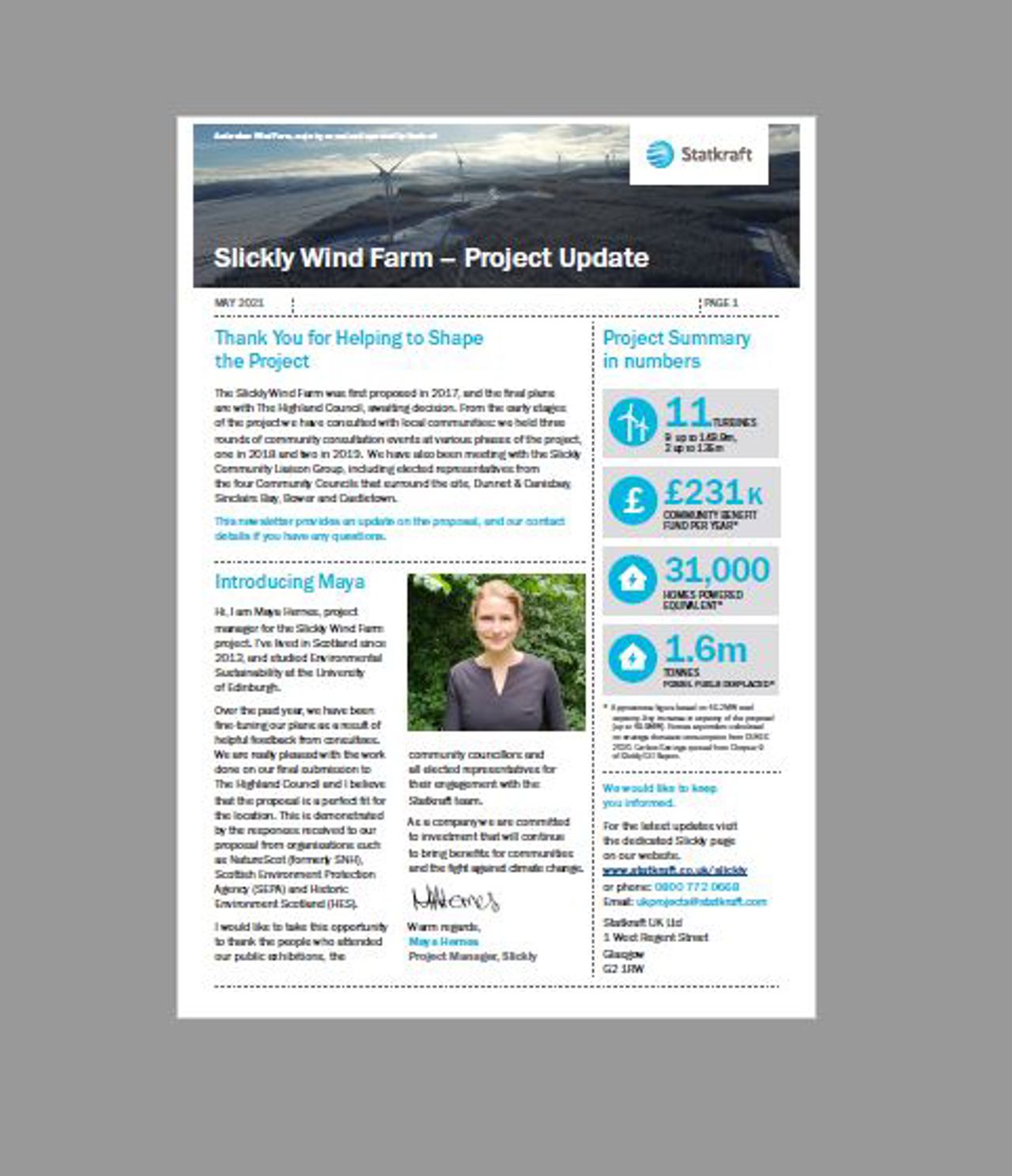
Project Update - May 2021
Read our latest project newsletter.
View Project Update in new window
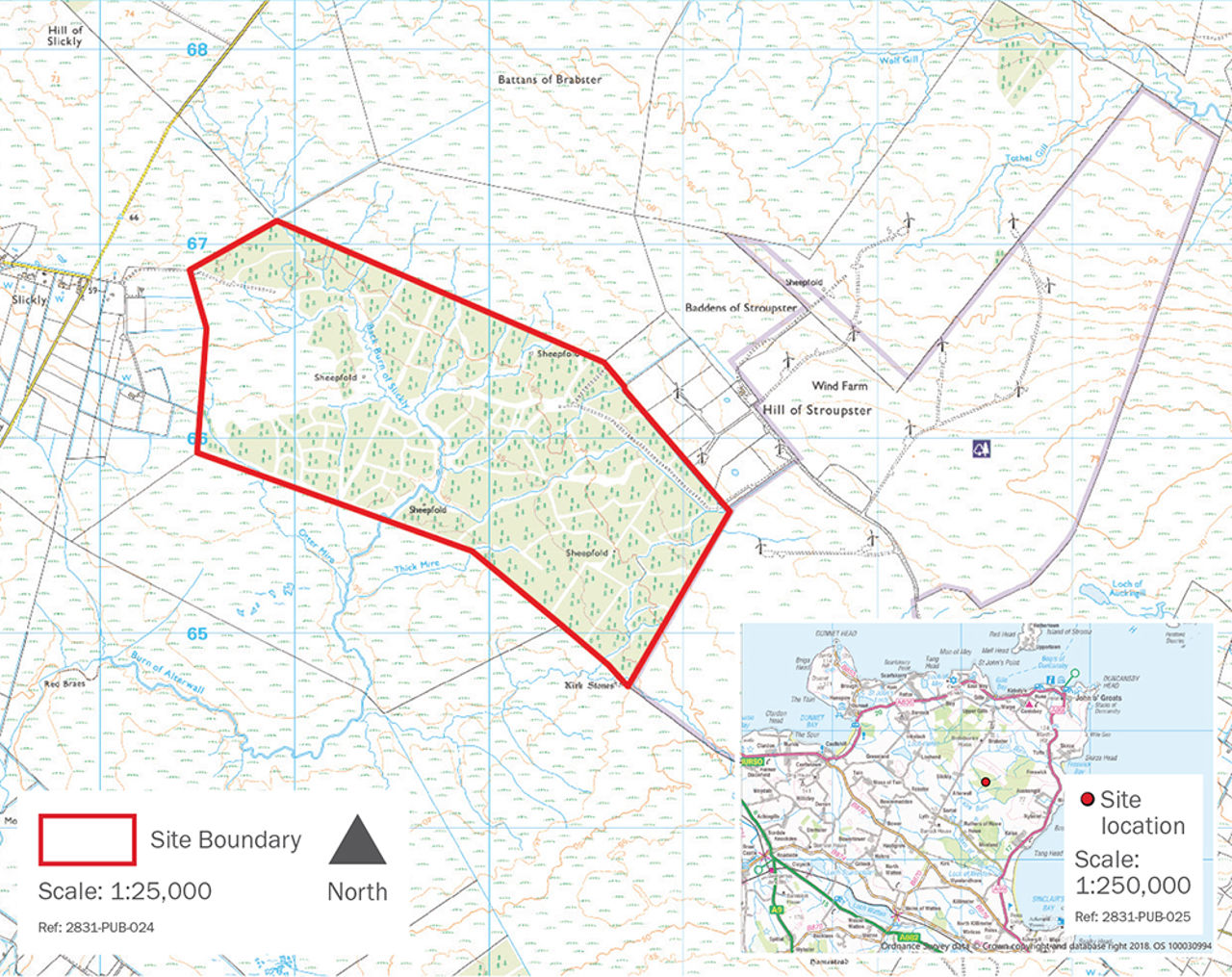
Application summary
Read the application summary for the Slickly Wind farm project submitted in December 2019.
Open in new window
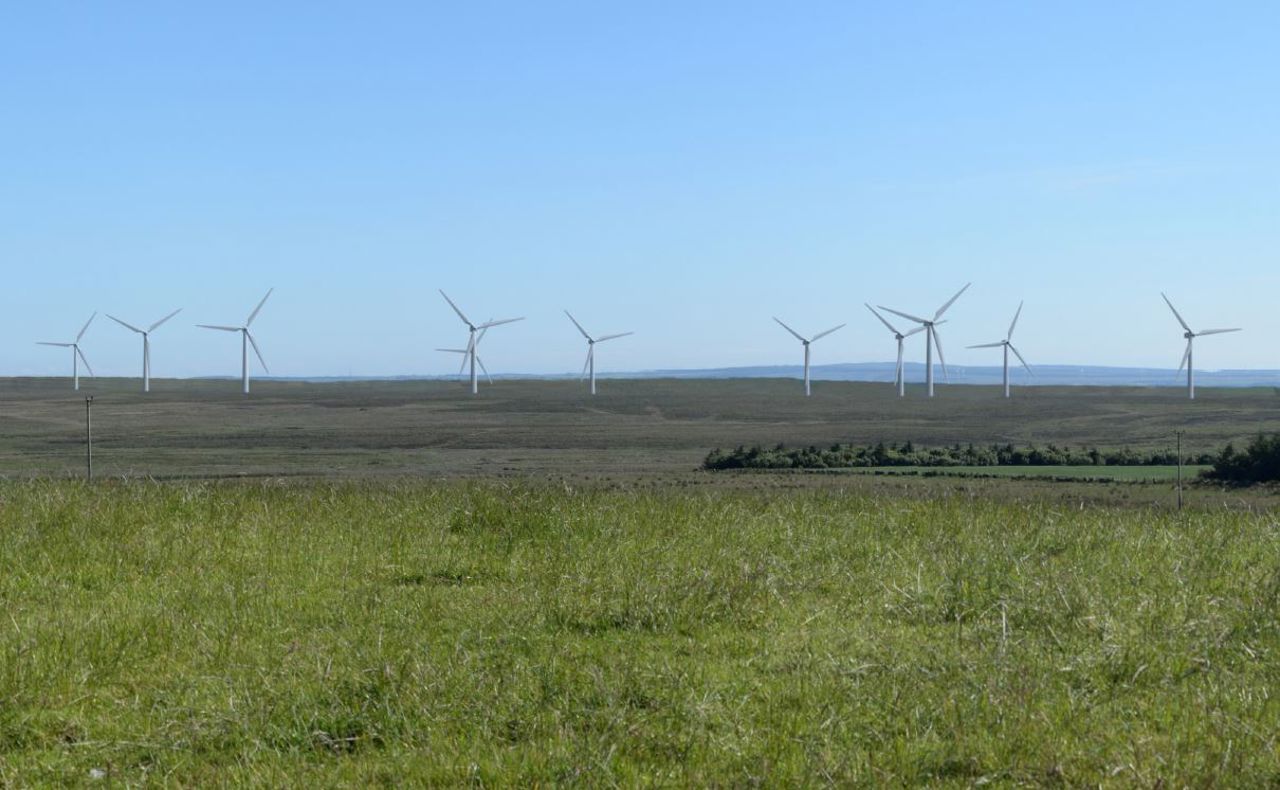
Read the summary of the updated information submitted in March 2021.
Updated Application Summary
View the summary of the additional information submitted to The Highland Council in March 2021.
OPEN IN NEW WINDOW
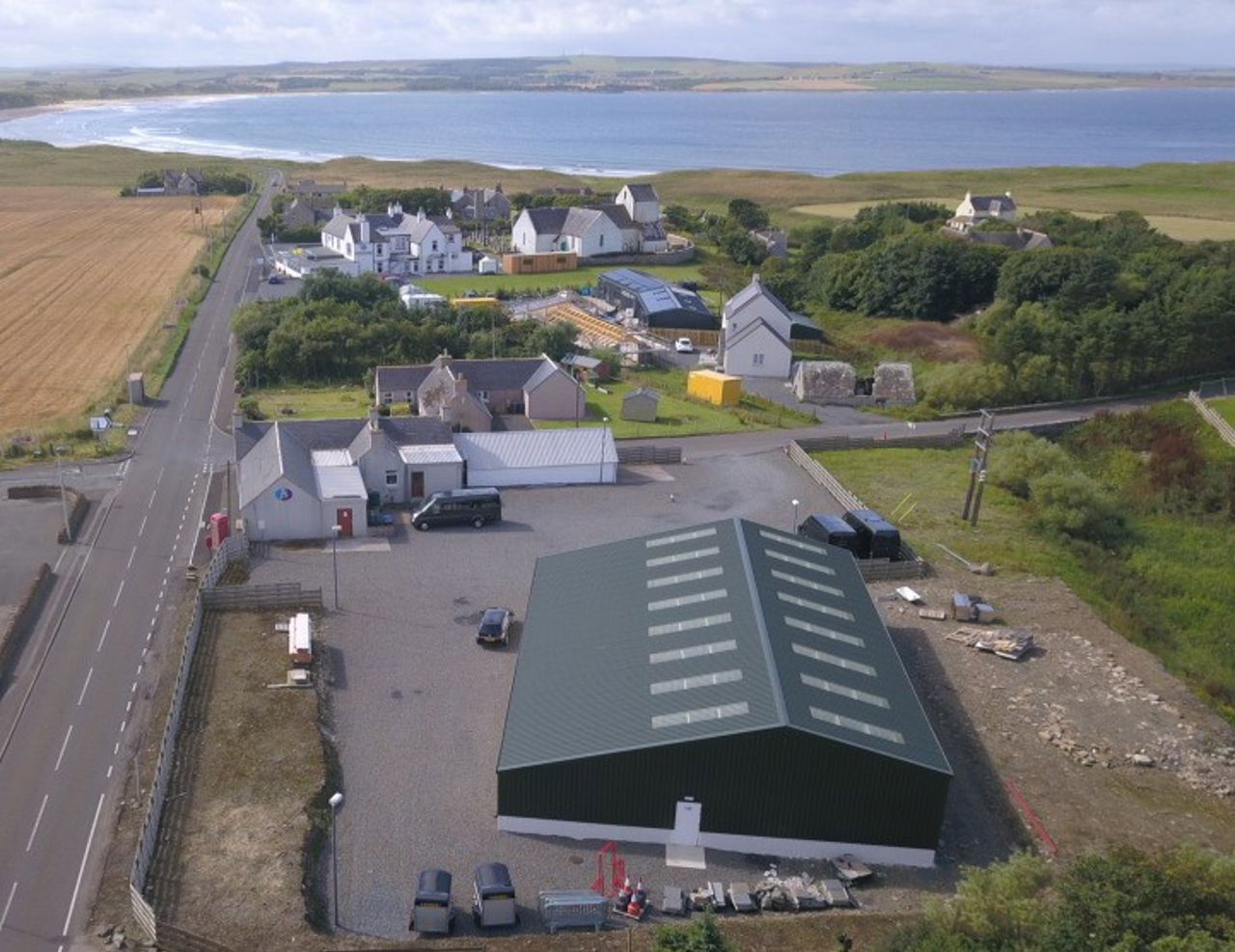
Local Supplier Story
We spoke to Blargoans Managing Director Martin Nicholson about his experiences of working with Statkraft, and how the business and relationship has developed over time.
About the proposal
Slickly Wind Farm would represent a natural extension to the existing cluster of wind turbines at Stroupster. As set out in the Highland Council’s: Onshore Wind Supplementary Guidance, new wind energy developments in north-east Caithness are significantly constrained to ensure the relationship between development scale and landscape character and setting is maintained.
However, the Highland Council have stated there is scope to consolidate and improve the existing layout of Stroupster. Slickly Wind Farm will achieve this through careful design with Stroupster and avoiding cumulative effects by ensuring turbine height and proportions work with the existing turbines.
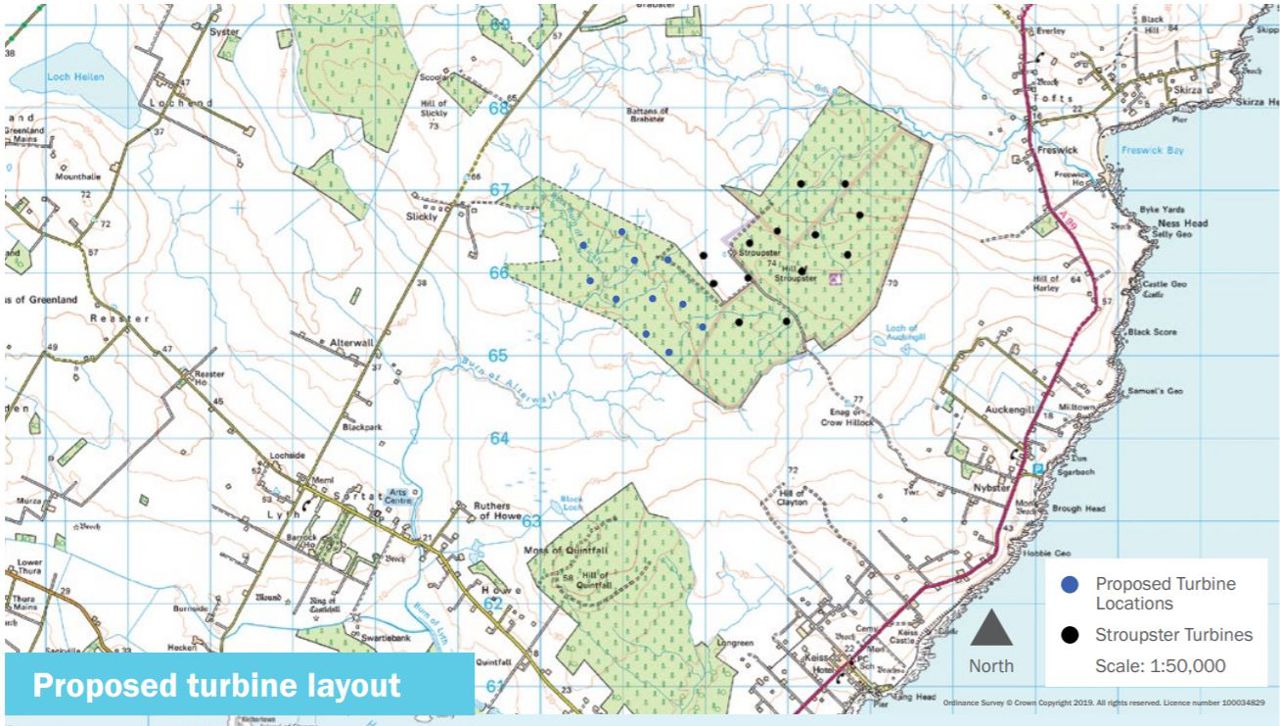
As a responsible developer and operator of renewable energy projects, our approach to development involves consulting widely with local communities. Our final submission has been shaped by responses to our consultation activity from the community and statutory consultees.
The proposal is for an 11 turbine wind farm that has the potential to generate electricity equivalent to the needs of over 31,000 homes. It is located east of Slickly, on land adjacent to the existing Stroupster wind farm development, approximately 8 km south west of John O’Groats.
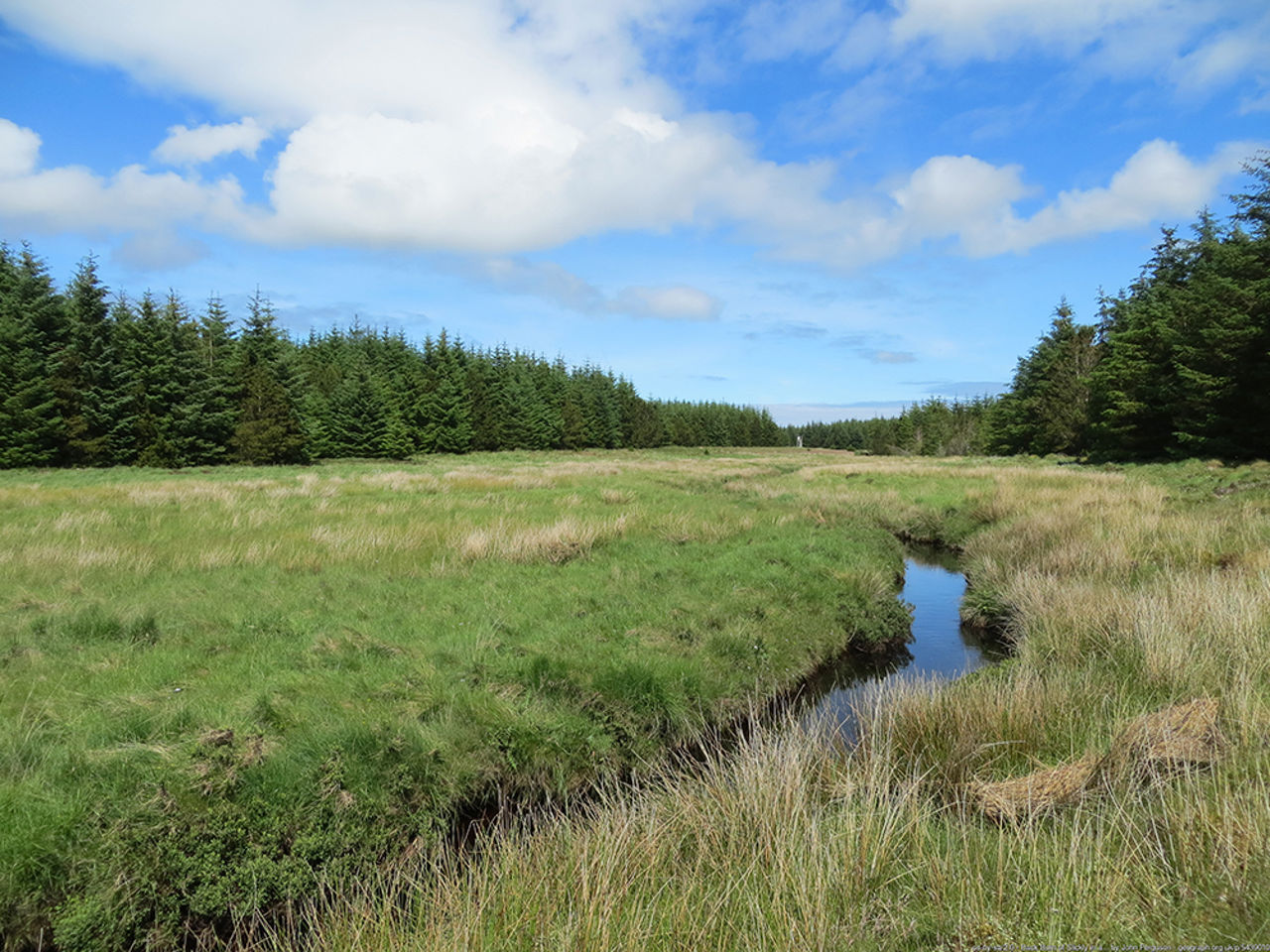
Broadband
From the beginning of our community engagement, local residents raised access to fast and reliable broadband as a real issue. In 2019 we commissioned a feasibility study to explore the potential for using the infrastructure at Slickly to deliver increased access to broadband. The feasibility study shows there is potential to deliver this, utilising the connection we need in place to manage communications during wind farm operations.
Liaising with a local broadband liaison group has taken place. The intention is not to deliver free broadband, but to facilitate improved access. We look forward to exploring the potential and progressing this important initiative, should this be desired by the local community.
Community, economic and environmental benefits
Why do we need another wind farm?
Climate experts agree on the urgency of ending our reliance on unsustainable and climate change causing fossil fuels like coal and oil. To guarantee future supplies of heat and electricity, we must turn instead to harnessing power from nature’s own unlimited resources of sun, wind and water. Statkraft is a proud investor in Scotland’s forward-thinking renewables policy and the much needed economic regeneration it will bring to rural communities across the country.
Slickly Wind Farm Community Liaison Group
Statkraft has built its reputation on putting communities first. We want our developments to have a positive and lasting impact on those who live and work in the surrounding areas. We established a Slickly Wind Farm Community Liaison Group and members include representatives from Dunnet and Canisbay, Castletown, Bower and Sinclairs Bay Community Councils. The Liaison Group provides a forum where local community representatives can feedback opinions of the local community on all aspects of the project and receive updates on the proposed development.
Local development trust for local people
If consented, a community benefit fund of £231,000 would be available - equating to £6.9 million over the 30 year operating period of the wind farm.
Statkraft would like to explore the use of this fund with local communities, to promote projects to enhance the quality of life for local communities and visitors through investment in the natural, built and cultural heritage of the area.
We believe that such a fund would be an opportunity to invest in communities close to the wind farm and that it could be used to create an ongoing and sustainable legacy that will outlast the turbines.
Creating jobs, boosting economies
The renewable energy sector in Scotland is now a significant contributor to the local, regional and national economy. It is estimated that during the construction phase, the project will be worth approximately £28.7m to the UK economy, over £7m of which is expected to be retained within the Highland region. If the Slickly Wind Farm is consented, we will invite local companies to tender for contracts during the construction phase.
We would hope to procure a range of services from local companies including construction work, drainage contractors, concrete suppliers, metal fabricators, plant hire, cleaning, waste management, security, fencing contractors and catering and accommodation suppliers. We have had early discussions with Caithness Chamber of Commerce to help us reach out to local companies and suppliers. We believe that by using the local workforce where possible, the development can have a direct and positive effect on the local economy. Businesses are encouraged to register on the Local Suppliers page.
The project team

Steve Reid
Principal Project Manager

Alison Hood
Principal Community Engagement Manager
Media and community enquiries
-

Alison Hood
Principal Community Engagement Manager